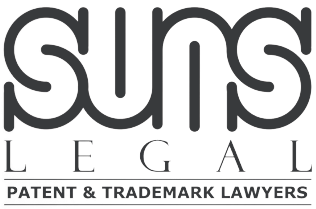For more intellectual property updates follow our WHATSAPP CHANNEL and SUNS LEGAL | LinkedIn
Written by Ronsiya Roy, Legal Intern, and Verified by Sunil Jose, Managing Attorney, Suns Legal
R.C PLASTO TANKS AND PIPES PVT. LTD V. GANESH GOURI INDUSTRIES & ANR
RFA(OS)(IPD) 1/2023, CM Nos.39/2023, 40/2023 & 42/2023
In a recent case, the Delhi High Court held that using a similar colour or generic shape in an artistic work does not constitute copyright infringement. The present case arose when R.C. Plasto, the appellant/petitioner filed an appeal after the learned Single Judge of the Delhi High Court dismissed their case. The appellant filed their case under Section 50 of the Copyright Act, 1957, seeking the removal of the respondent/defendant’s copyright registration. Aggrieved by the judgment dated 20/02/2023, the appellants submitted this intra-court appeal under Section 96 and Order 41 of the Code of Civil Procedure, 1908 (CPC), read with Rule 2(e)/5(V)/10/29 of the IPD Rules.
The appellant claimed to have adopted the trademark ‘Plasto,’ a registered mark and an artistic label. Similarly, the respondent obtained registration for an artistic label featuring the term ‘Gauri Aqua Plast’. Both the appellant and the respondent manufacture and supply water storage tanks. The appellant’s counsel argued that the court should consider the overall similarity between the two artworks when evaluating their likelihood. Counsel further asserted that the respondent was aware of the appellant’s mark, and when both parties settled an earlier dispute before the Nagpur court, the respondent, via an undertaking, promised not to use ‘Plasto’ or any other mark similar or identical to any of the appellant’s marks. However, the learned Single Judge overlooked this factor when deciding the case.
The appellants contended that they are the original authors and creators of the artwork ‘Plasto,’ with the mark registered on 05/09/2014 in Class 19. They argued that the respondent is trying to benefit from the appellant’s popular business. They maintained that the respondent’s mark substantially copies their colour scheme, including the smooth-shaped corner and the background colour. In contrast, the respondent’s counsel argued that their mark is not similar to the appellant’s.
The court held that copyright infringement does not require an exact copy of the original work; a significant resemblance to the original is enough to establish it as a copy. To determine similarity, the court applied the test of visual appearance, assessing whether an average viewer, upon seeing both works, would conclude that one work is a copy of the other. The court examined the works of both parties and observed that they are not identical. It noted that the only similarity was the word ‘PLAST,’ derived from plastic. The respondent added the prefix ‘AQUA’ to ‘PLAST’ and included additional graphical elements. This led the court to conclude that the respondent’s work did not constitute a colourable imitation or substantial reproduction of the appellant’s work.
The appellant, referencing proceedings from the Nagpur court, argued that the court should evaluate the respondent’s mark under the ‘Safe Distance Rule’. This rule is applied to relieve the court of the need to retry the dispute after the infringement case is decided, as every small variation would lead to the proceedings requiring the court to adjudicate again. If the court finds that merely a small variation has been adopted to defeat the purpose of the injunction already imposed, the court can interfere by applying this rule and pass an order without trying the suit all over again. However, the court pointed out that the appellant had previously agreed in the Nagpur court settlement not to object to the respondent’s use of the mark ‘Aqua Plast’ or any other mark consisting of the word ‘Plast’ as long as it did not infringe the appellant’s mark. Therefore, in the court’s opinion, the appellant cannot benefit from the respondent’s prior undertaking. The court also observed that the respondent’s use of the colour blue was simply an idea to represent its business in water tanks and not a specific expression of that idea. Consequently, the court dismissed the appeal and upheld the Single Judge’s decision.
Authors comment
The Copyright Act of 1957 recognizes artistic works and grants the author exclusive rights to commercially exploit their work. In this case, the appellants argued that the respondent’s mark was a colorable imitation and substantial reproduction of their work. They invoked the ‘Safe Distance Rule,’ which aims to prevent an infringer from modifying a work and exploiting it in the future. However, the court found no legal basis for the application of this rule to the present case. When comparing the two marks, the court noted that the only similarities were the use of the word ‘PLAST’ and a blue background color, and thus both marks are not identical. This case reaffirms that the Copyright Act protects the expression of an idea and not the idea itself (R.G Anand v. M/S Delux Films & Ors, AIR 1978 SC 1613) and considers a label or background color as an idea, meaning it cannot constitute an infringement.

